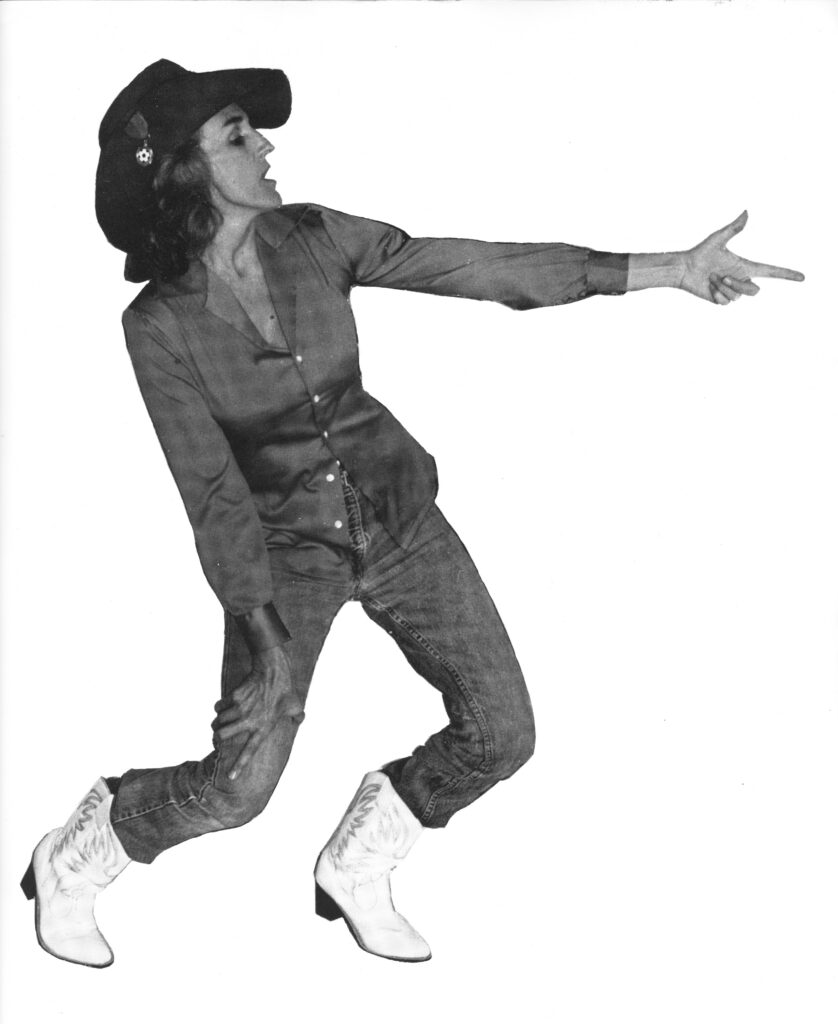Woman See
Woman See – Premiere Performance, Studio K, 23rd Street, Washington, DC
Woman See – Duet Part I Commencement (rehearsal video: 04:36)
Note: Interview with duet performance: Woman See, PBS, WETA TV, DC
(See interview on separate page on maidadance.com)
Note: Dialogue, a Journal of Mormon Thought (1981) includes an interview of Maida that features Woman See.
WOMAN SEE – 1980 and 1981
June 12, 1980 – 60 minutes
A politically charged feminist performance in eight distinct parts with live music, narrative, and mixed media conceived and directed by Maida Withers. As with many of Maida’s works, serious issues addressed with humor very present.
Woman See culminated a five-year period of Maida working, as one of four founding members of Mormon’s for ERA (MERA), together in Washington, DC / Virginia / Utah and with other religious women’s organizations to secure the passage of the Equal Rights Amendment by the US Congress. The Amendment was defeated then and now (2025) with insufficient states voting, in time, to add women to the existing constitution.
Woman See is a strong, delightful, feminist view, a statement about the challenges of gaining equality for women in America. There are many complex ideas addressed in the work….including the final “death” transformation. There are frequent and subtle references to the current practices of religious organizations, those resistant to the amendment. The LDS religion was one of many religious organizations fighting financially, involving men & women of faith to defeat the amendment in the state legislatures. Many changes continue to open awareness of complexities related to “gender.” Maida continues “her passion for freedom of life and freedom of expression for all humans regardless of time, age, sex, or culture…..nothing is off or on the table!!!!”
Woman See – an evening length performance on the emergence / acknowledgement and awareness of feminism values and practice. Music by Lloyd McNeil, wind instruments, and Terry Plumeri, acoustical bass and Chris Beaven. Jean Walser Smith, tall stately female, stands on a box wearing a cowgirl outfit with boots and, of course, a white cowgirl hat, reading aloud the Smithsonian’s official US Government statement regarding the current protection of the US Constitution (i.e. 6′ deep in a cement container with no frequent exposure to light through public display, etc.). One page a year is exposed to the actual public.
For Woman See, choreography/film/set/narration was created and selected by Maida Withers with engagement of the dancers. The show opened with a large weather balloon suspended high above the audience with film projection on the surface of the weather balloon – a sensual close-up of Maida moving mouth and tongue in somewhat gross but enticing motions.
A few segments of Woman See are specifically associated with Mormon historical practices….with loving consideration and understanding.
Maida performs a solo with touching of parts of her body (mouth, breast, butt) with sensual humor not vulgarity. Maida also dances a duet tied by rope to Jeff, her male partner. A separate male/female love duet danced by Heather and Dale involves the male continually returning the female onto a 1950’s aqua colored medal refrigerator drawer – her domestic pedestal/throne. In another section, the sensual male figure, Dale, turned into female, is carried majestically thru space covered with a large pink parachute and ultimately wearing a female mask with plastic face and hair. When the women discontinue to hold Dana aloft by waving the parachute to fill with air, he is destined to deflate until lying on the floor with only his/her head and mask searching for help in his hopeless condition without support of the women.
Woman See strives to be charming, even seductive, while drawing attention to antiquated notions of roles/expectations through humor and exaggeration. For Maida her life with three amazing sons and a brilliant and humorous husband, is tumultuous but humorous and an open playing field. No anger…no unfulfilled expectations, etc.
First Showing: (locate dates) GW Building K large Studio Theater (former large basketball court with very high ceiling). Audience is seated on chairs or on the floor. Acoustics are acceptable for reading and speaking the scripts/text during the performance.
Premiere: (locate dates) Historic Corcoran Gallery of Art, South Atrium; Washington D.C.’s largest private museum/gallery.

Maida Withers, in full ecstasy!
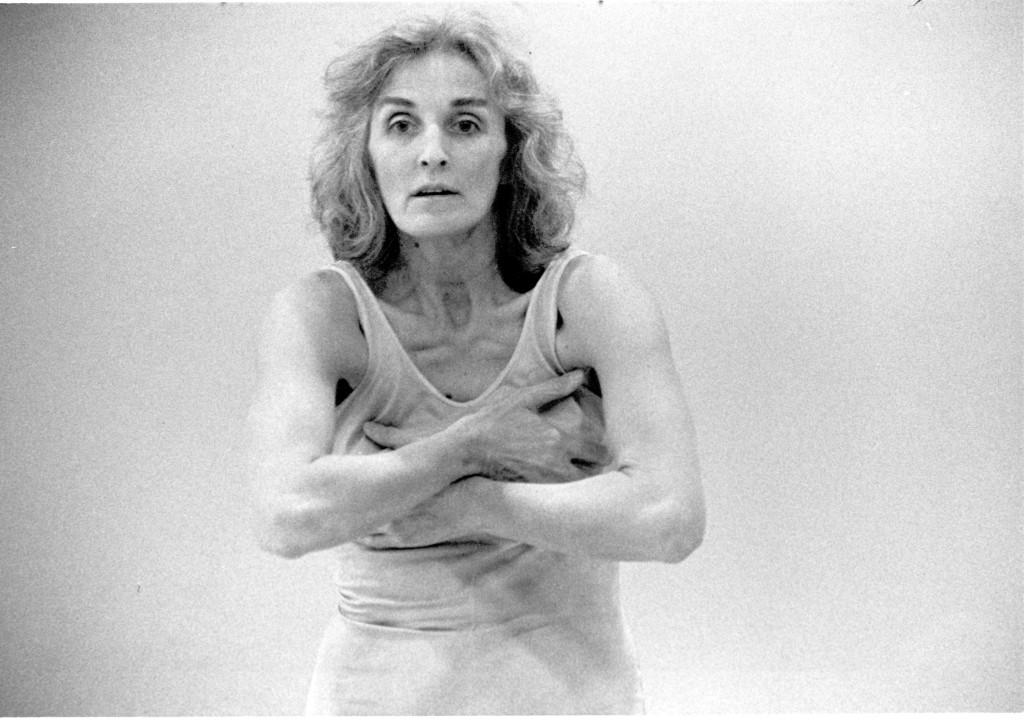
Maida Withers performs humorous versions of body parts and touching!

Dale Crittenberger – on the shoulders of women,a male is turned to female with a plastic mask and hair, floating in the air under a pink delightful parachute!
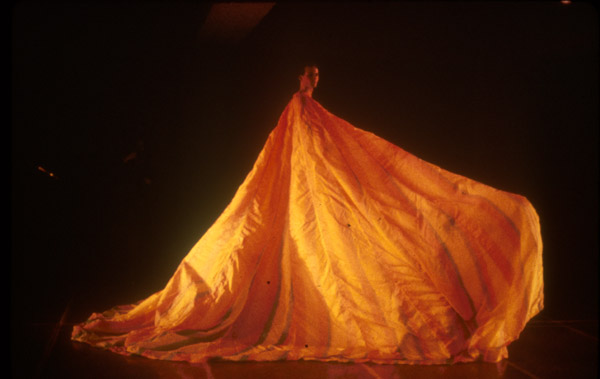
Dale Crittenberg

Dale Crittenberger, Heather Tuck, Frances Babb, Kim Curtis , working out relations!
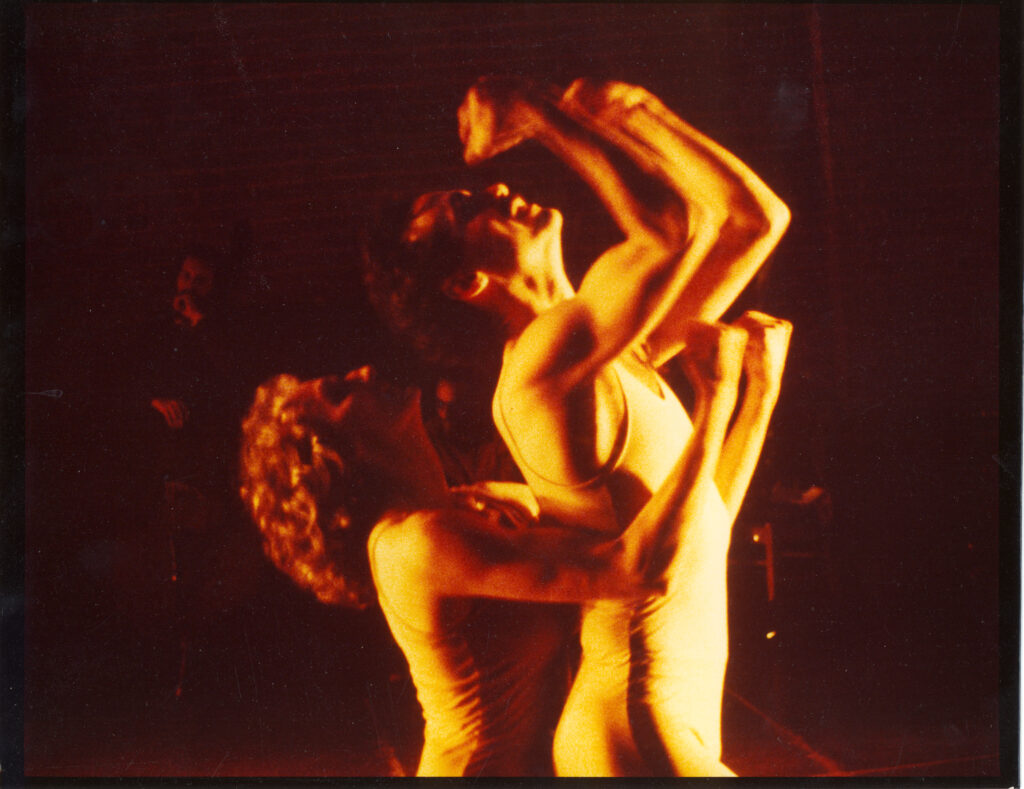
Maida Withers and Jeff Strum share power!
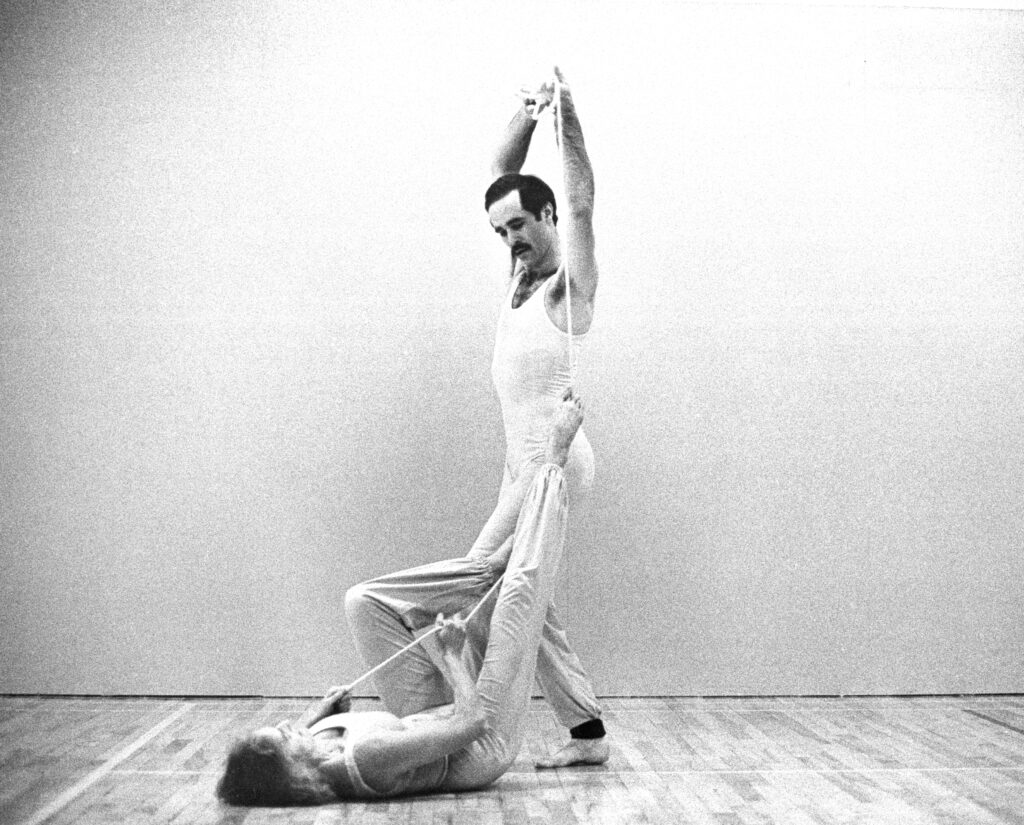
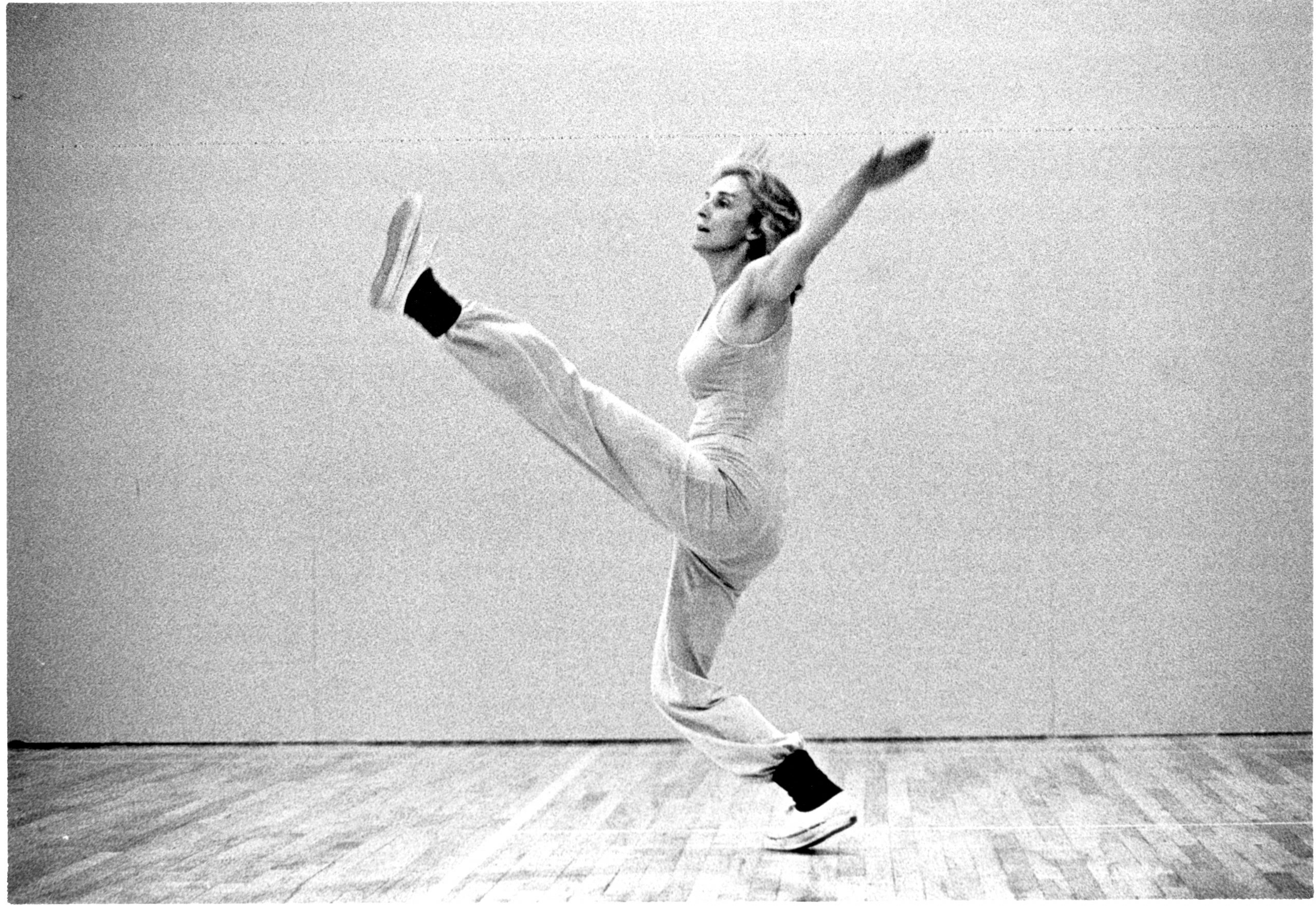
Maida Withers pleasure and freedom with a touch of vulgarity and krass!
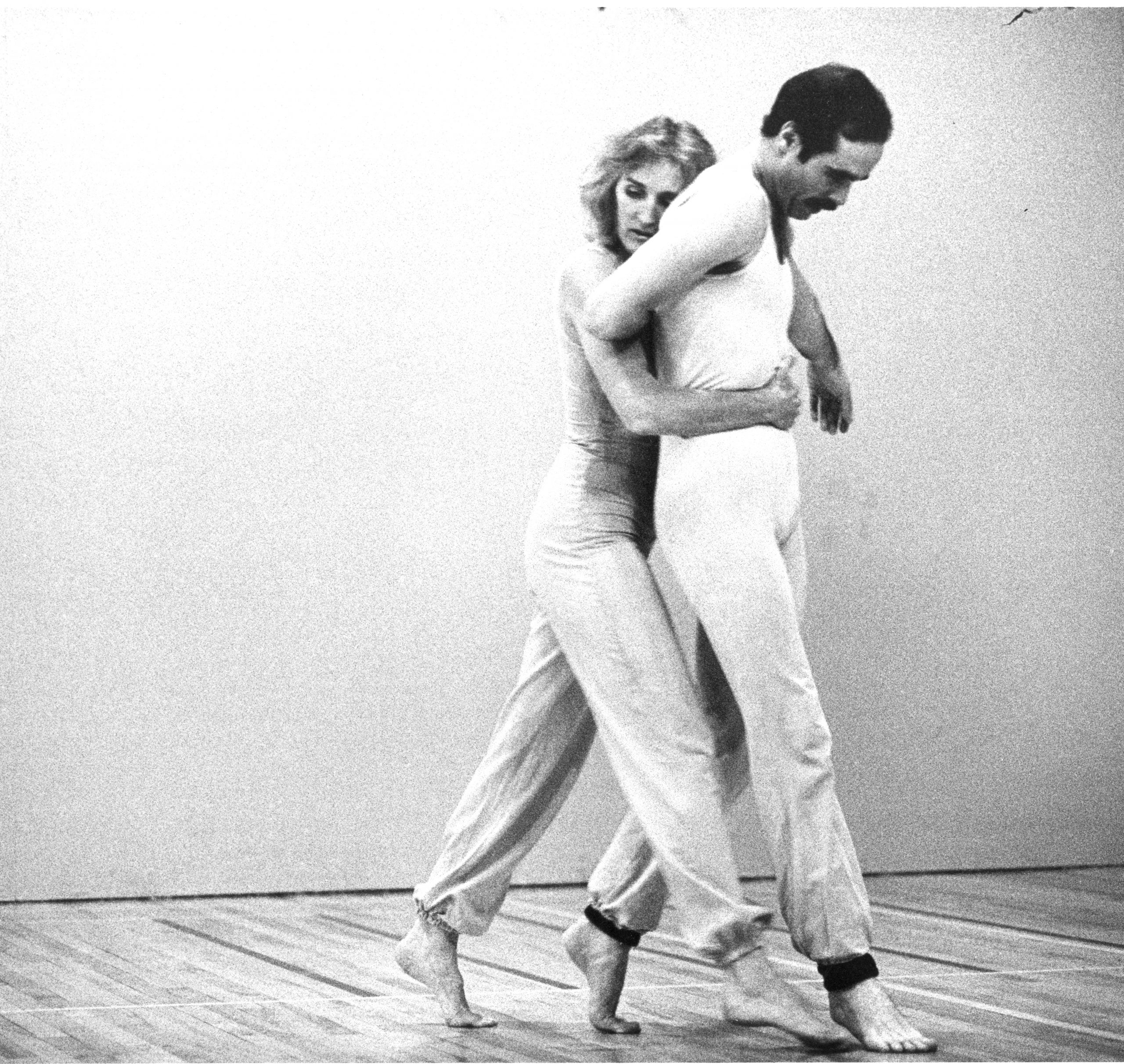
Maida Withers and Jeff Strum, male/female duet of tender control – a special contest!
Choreography Sequence:
Part I: Commencement (film of mouth on weather balloon) and Journey to Innocence (Babb and Curtis);
Part II: Ties That Bind (Strum & Withers)
Part III: Deities and Other Secrets Kept (Company) No photos.
Part IV: He and We / Sacred Sisterhood (Company); Excerpt from “Ellis” a television script by Verabel Cluff; slides
Part V: Woman Waiting (film – bread making) (Tuck)
Part VI: Pitfalls and Pedestals (Crittenberger and Tuck); Excerpts from Public Information Sheet about preservation of the Constitution / National Archives)
Part VII: The Great HOld Up ( Withers Solo)
Part VIII: Recommencement (Frances Babb, Jeff Strum, Heather Tuck; Film projection)
Projected Slides: snake in circle; woman in flower; mother with twins; man and woman; pregnant woman; woman in closet; folk on man; 2 woman destroy man; reclining nude; Picasso nude ; others,
1984 rehearsal video: Dale Crittenberger and Frances Babb rehearse Part I:
Because we did not have an acceptable video, dancers returned to Building K to perform specific sequences from the performance work.
Set Pieces; costumes:
Opening: a large flesh colored weather balloon hangs high above performance space with projection of close-up action of a film of withers mouth and tongue behaving vulgarly.
Duet: Aqua metal refrigerator drawer becomes a throne/location for the “wife” to be placed as an object of worship and convenience of control – “house wife.”
Duet: Stately Jean Walser stands on a white wooden box in a cowgirl outfit with white boots and a white cowgirl hat reading a document created by the US government regarding the necessary physical protection of the original documents (pages) of the Constitution.
Male Solo Figure: wearing a pink/yellow stripped parachute while riding on the shoulders of another male dancer, with women under the parachute; glides through the space; eventually turned female by forced wearing of a plastic mask with plastic hair.
Women wearing veils: nylon covering faces from forehead down – hiding or preserving female beauty and power – shrouding the person through covering the body.
Sacred Sisterhood reading (play script written by Verabel Call Cluff, partial document below – considers pologamy:
>I recently attended a friend’s funeral, over 80 years old. He was surrounded by 3 wives, and, of course many children.
>and they were both naked, the man and his wife and they were not ashamed
>even though the approval of the first wife was a requirement, sometimes first wives were thought to be “just stubborn”, and the authorities would override their objections
>some polygamists were much sought after
>I’ve seen you green-eyes with jealousy over Mary being with Milford and you being here
>Everyone here knows I’m a Mormon but I don’t talk about my involvement in polygamy. No one understands…I don’t know if I do
>God commanded Abraham and Sarah, gave Hagaar to Abraham to wife. And why did she do it? Because this was the law; and from Hagar sprang many people. This, therefore, was fulfilling, among other things, the promises… a commandment that was necessary for celestial advancement??
>You get along with Zina, don’t you?
>Yes…and Esther, Edward, Katie and Evelyn, but it has taken time. Now it’s Brother Pratt I find distasteful
>Wash your face, lass, it will make everything better
>The old geezer misses me now. Amazing, when he has four others to take my place
>Oh, Ellen. Your heart must feel lonely but perhaps grace will be given you to “grin and bear it” as the saying goes
>Mother has better courage to live in a hard place
>Mother has never seemed to feel at home since she left the Valley and she thinks she will never be satisfied till she gets back. She seems very silent of late.
>You’re a woman. You’re to follow my counsel. I forbid you to go.
>The children and I took the 5:20 am train
>One man who let his wives have a hand in mate-selection had an interesting technique. He would organize a sleighing party of young girls and afterwards would take them home for his wives to observe their mingled luster.
>His wives were selected with attention to heredity, education, and absence of defects
>He saw the faces of women he had not yet met and felt that he had to marry them all.
>Give my love to Kate and Margaret and kiss all of the babies for me
>At that moment, I compared my feelings of relief with the experience one has when the first crack of dawn comes after a night of careful vigilance over a sick patient
>I’m glad for the Pratt money. We can each have our own place
>This year they will have plenty of grapes and some peaches….
(Source of document – Verabel Call Cluff, Author, original play on Ellis Shipp – Brigham Young sent brilliant Ellis Shipp to medical school to help with childbirth in the early Mormon society. *Mormon Medical Doctor Ellis Shipp)
Maida, woman of “the west”
What the press is saying
"The evening's oldest work, Woman See, has a worn-out feel. Maida Withers' 1981 manifesto on feminism created in the wake of the eventual non-passage of the Equal Rights Amendment, begins with a dry reading on the U.S. Constitution. Mining expressive gestures—thumbing her nose, sticking out her tongue—and a film of a contorting tongue and mouth projected on a giant balloon, doesn't really add much depth of meaning. Woman See, performed by the white haired, long legged Withers with fearless abandon, is, perhaps, a work of its time. Today, though its ideas are far from dated, its artistic underpinnings are." Lisa Traiger
"...The content was powerful and its delivery clear and effective." Celeste Lawson
"...'Woman See' was masterful. A few movement themes of a typical Withers windup - half unstretching, carefully balancing, brusquely coiling, almost squatting, groping - are stated in a film clip by the handsome, big-boned choreographer with the billowing gray hair." George Jackson
"Maida Withers - A Profile of the Artist Through 'Woman See." (pictorial and written essay). April 1982 Photos by Dennis Deloria Mary Bradford
"Withers Strikes a Feminist Chord" Maida Withers, one of Washington's more established and experimental choreographers, broached a new subject area yesterday at GWU Studio theatre in "Woman See," an eight=part exploration of female issues that began, aptly with, with a film of the choreographer dancing curving shapes across a huge, distinctly womb-shaped balloon. Two sections of the work, which will be re=structured for later performances, carried a gratifying sense of conviction and a corresponding atmosphere. "He and We/Sacred Sisterhood" offered poignantly inter-locked dance imagery to visualize a fragmented monologue about the polygamous marraiges remembered, one supposes, from Withers' own Mormon girlhood. And "pitfalls and Pedestals" illustratede with equal vigor, and some fine humor, the sexual restraints that have blocked passage of the Equal Rights Amendment. While a cow=girl in white played patriotic tour guide at the National Archives, a male dancer managed to keep his female partner firmly on her pedestal - an aqua vegetable drawer from a refrigerator. Both passages suggest that the autobiographical mode might be one that Withers could fruitfully pursue. Anne Marie Welsh
Artists and Collaborators
- Choreographer
- Dancers
- Music
- Text / Reader
- Mask
- Slides, oan
- Lighting Design
- Mask Design
- Ellis Shipp Play / TEXT
- Photograph for Poster
- Photographs (Corcoran Gallery)
- TV Script"Ellis"
- Mouth Film
